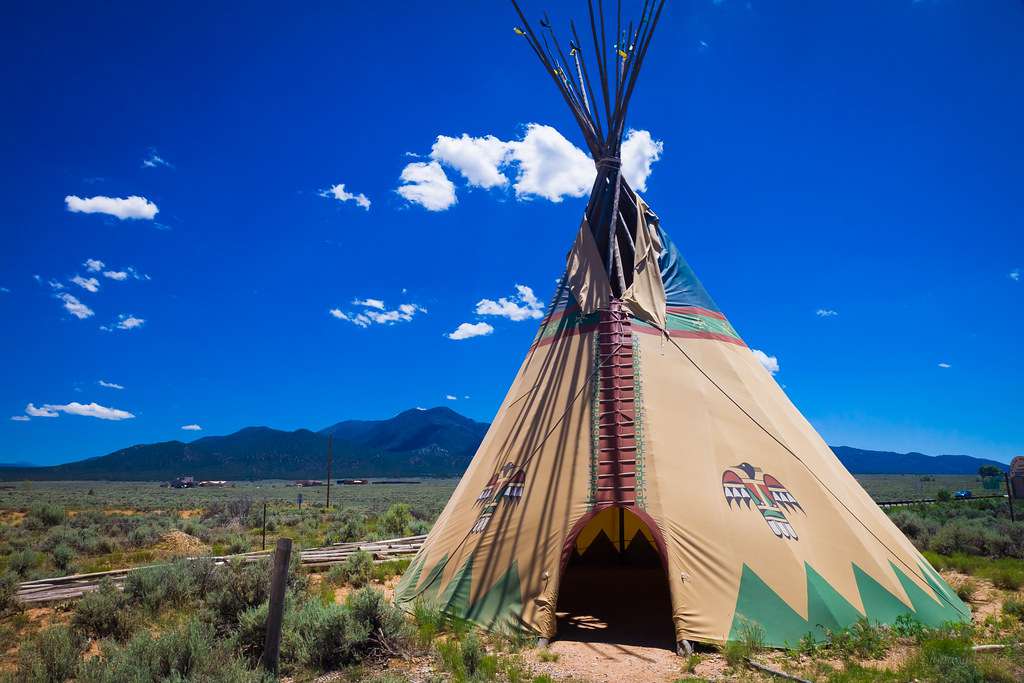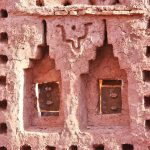Tepee, also spelled tipi, conical tent most common to the North American Plains Indians. Although a number of Native American groups used similar structures during the hunting season, only the Plains Indians adopted tepees as year-round dwellings, and then only from the 17th century onward. At that time the Spanish introduction of horses, guns, and metal implements enabled Plains peoples to become mounted nomads. The tepee was an ideal dwelling for these groups, as it could be easily disassembled and transported.

Tepees in Banff, Alta., Can.
The tepee was generally made by stretching a cover sewn of dressed buffalo skins over a framework of wooden poles; in some cases reed mats, canvas, sheets of bark, or other materials were used for the covering. Women were responsible for tepee construction and maintenance. In raising a tepee, a woman would begin with 3 or 4 poles, depending upon her tribe’s preferences. These first few poles acted as the keystones of a conical framework that was augmented by some 20 to 30 lighter poles, all leaning toward a central point and tied together a short distance from the top. An adjustable flap was left open at the top to allow smoke to escape, and a flap at the bottom served as a doorway. Tepees were usually 12 to 20 feet (3.5 to 6 metres) high and 15 to 30 feet (4.5 to 9 metres) in diameter, although larger structures were not uncommon. When very large shelters were needed, two pole frameworks could be set adjacent to one another in a figure-eight shape, with poles and covers left out of the adjoining walls. Many examples are known of small tepees sized for children’s playhouses and very small tepees sized for dollhouses.

It was common for Native Americans to devote much of the winter season to decorating their tepees with colourful paintings of animals and the hunt. The beauty and gracefulness of the tepee made it the popular image of the home of all indigenous Americans, although the wickiup (wigwam), hogan, igloo, longhouse, pueblo, and earth lodge were equally important examples of Native American dwellings.



Comments are closed